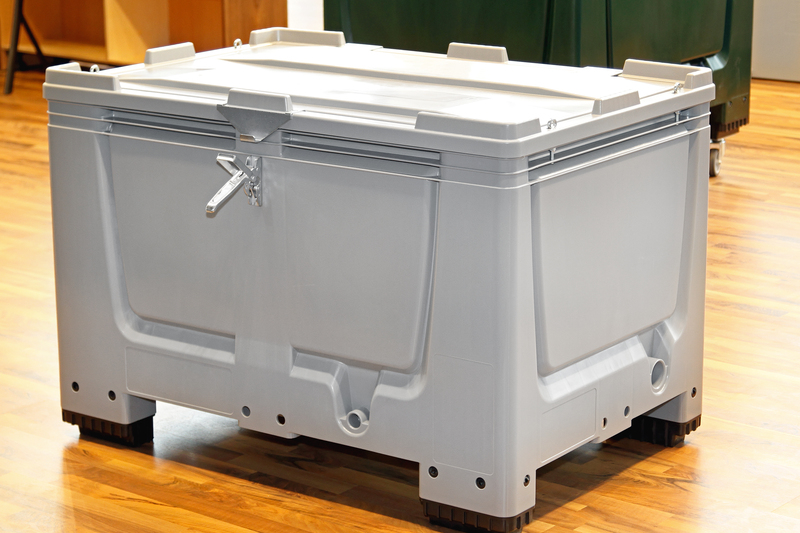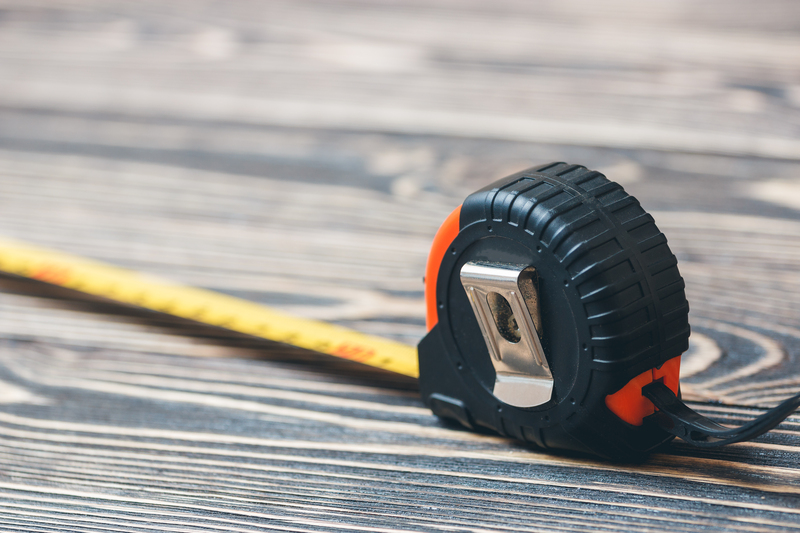Keep Your Couch Pristine: Expert Storage Strategies
Posted on 17/05/2025
Keep Your Couch Pristine: Expert Storage Strategies
Your couch is more than just a place to sit--it's an important part of your living space, a gathering spot for friends and family, and sometimes, a significant investment. Whether you're relocating, renovating, or simply need to maximize space, knowing how to store your couch properly will ensure it remains pristine for years to come. In this comprehensive guide, we'll reveal expert storage strategies for couches, so you can keep your couch looking and feeling like new.
Why Proper Couch Storage Matters
Improper storage can lead to damage, mold growth, deformation, or unpleasant odors--all of which can significantly decrease the lifespan and aesthetics of your beloved sofa. Implementing the right storage solutions protects materials like leather, fabric, and wood from environmental hazards while preserving the integrity of your furniture's structure and appearance.

Preparation: The First Step to Pristine Couch Storage
1. Clean Your Couch Thoroughly
Before you even consider moving your couch into storage, it's crucial to clean it thoroughly. Dirt, oils, food crumbs, and pet hair left on your furniture can result in stains, odors, and even attract pests during storage. Here's how to prepare your sofa for storage:
- Vacuum:** Use an upholstery brush attachment to remove all dust, crumbs, and debris from every nook and cranny.
- Spot-clean fabric: Use a mild detergent or the cleaner recommended by the manufacturer. Always spot test a hidden area first.
- Clean leather couches: Wipe down with a damp cloth and use a specialized leather conditioner to maintain suppleness.
- Disinfect: Use gentle disinfectant sprays to kill bacteria and eliminate odors. Make sure the couch is completely dry before moving on.
2. Disassemble When Possible
If your sofa can be disassembled, do so carefully. Remove legs, arms, and cushions whenever possible. This not only makes moving and storage easier but also reduces the risk of breakage or warping.
- Wrap screws and hardware in a bag and tape it securely to the sofa frame.
- Label pieces for easy reassembly after storage.
3. Wrap Your Couch Properly
Protection is key to keeping your couch pristine while it's in storage. Use the following materials:
- Furniture blankets: Heavy-duty blankets add a layer of cushioning, preventing scratches and dents.
- Plastic wrap: Use shrink wrap or plastic covers after wrapping with blankets--never directly on the fabric or leather. Direct plastic can trap moisture and cause mildew.
- Moving pads: Perfect for extra padding on corners and edges.
Choosing the Right Storage Unit
Not all storage options are created equal. Selecting the best environment for your couch determines its condition when you bring it back home.
Climate-Controlled Storage: A Worthwhile Investment
Climate-controlled storage units maintain a constant temperature and humidity level, providing optimal protection against mold, mildew, and cracking, particularly for leather and wood-framed couches.
- Minimizes risk of moisture damage and prevents warping or swelling.
- Prevents pest infestations and deters the growth of mold and mildew.
- Reduces fading and fabric deterioration.
Choosing the Correct Storage Size
Pick a storage unit that allows you to store the sofa without stacking items on top. This will prevent pressure marks and deformation.
- Measure your couch beforehand and select a unit with adequate space for airflow.
- Avoid cramming: Even though it's tempting to maximize your storage unit, overcrowding can lead to dents and fabric fraying.
Expert Couch Storage Strategies
1. Elevate Your Couch
Never store your couch directly on the storage unit floor. Use wooden pallets, plastic risers, or blocks to elevate your sofa. This ensures proper airflow and protects it from potential flooding or condensation.
2. Store Vertically or Horizontally?
While it might seem smart to stand your couch upright to save space, the safest method is to store it in its normal horizontal orientation. Standing it on its side or end can cause frame strain or warping over time.
- Always store the couch flat, as it would sit in your home.
- If space is tight, place it near a wall and avoid leaning too many items against it.
3. Maintain Proper Air Circulation
Allowing your couch to "breathe" avoids musty odors and the buildup of moisture. Space it at least a few inches from any other items in your unit or storage space.
- Do not wrap too tightly--use breathable covers when possible.
- Avoid sealing the entire package to prevent trapping existing humidity inside.
4. Avoid Sunlight and Heat Sources
Store your couch away from windows and any sources of direct sunlight or heat. This caution prevents fading, drying, or cracking of fabric and leather surfaces.
At-Home Sofa Storage Solutions
If you're looking to store your couch at home for a short period--maybe during a remodeling project or to create temporary space--you'll want to ensure it's equally protected. Here are some at-home expert couch storage tips:
1. Store in a Dry, Cool Room
Basements and garages seem convenient but are often prone to humidity and temperature fluctuations. Instead, opt for a spare bedroom or living room with good airflow.
2. Use Slipcovers or Sheets
Well-fitted slipcovers or cotton sheets can provide a barrier against dust without trapping moisture. They're an ideal way to keep your couch pristine during short-term storage.
3. Rotate Placement If Possible
Every few weeks, slightly move or rotate your sofa to ensure no single area is under stress or pressure for too long. This practice helps maintain structural integrity.
How to Prevent and Manage Common Storage Hazards
1. Mold and Mildew
As a couch is composed of absorbent materials, moisture is enemy number one. To counteract:
- Ensure completely dry upholstery before storage.
- Use silica gel packs or dehumidifiers in the storage space.
- Allow periodic ventilation by uncovering and airing out your couch if possible.
2. Pests and Vermin
Unprotected couches are magnets for rodents or insects in unsealed areas. Prevent infestations by:
- Cleaning thoroughly beforehand.
- Storing in a sealed environment.
- Avoiding food spills and crumbs inside or on the couch.
- Using natural pest deterrents like cedar chips or lavender sachets.
3. Physical Damage
One of the most critical aspects of sofa storage is avoiding tears, dents, or scratches.
- Use padded covers or blankets.
- Keep the couch away from sharp or heavy items.
- Do not stack other furniture or boxes on your couch.
Tips for Moving Your Couch to Storage
1. Use the Right Equipment
Moving heavy furniture is a common cause of accidental damage. To keep your sofa pristine:
- Use furniture dollies, straps, and sliders to prevent dragging and scuff marks on the legs and frame.
- Work with a partner or hire professional movers familiar with furniture transport.
2. Transport with Care
Avoid cramming your couch into a moving truck at odd angles. Place it where it won't tip, slide, or contact sharper items. Use ample padding during transit to safeguard against shifting and bumps.
Long-Term vs. Short-Term Sofa Storage
Short-Term Storage (a few weeks to a few months)
- Cover your couch with breathable material.
- Check every few weeks for any issues.
- Keep in a climate-stable environment if possible.
Long-Term Storage (multiple months to years)
- Opt for a climate-controlled facility.
- Use heavy-duty wrapping and padding.
- Elevate the couch and ensure thorough cleaning beforehand.
- Consider periodic visits to inspect for early signs of issues.
Expert Maintenance Tips After Storage
Once you're ready to bring your couch back into your home or office, follow these steps to restore it to perfection:
- Air it out: Remove all coverings and allow your couch to breathe for a day or two.
- Clean again: Lightly vacuum and spot clean to remove any residual dust or odors.
- Condition: For leather or wood, apply fresh conditioner or polish for renewed shine and suppleness.
- Inspect for issues: Check for pests, mold, or frame damage before use.

Frequently Asked Questions About Sofa Storage
Can I store my couch in a garage?
While possible, garages are susceptible to extreme temperatures and humidity, increasing the risk of damage. Always opt for a climate-controlled space when possible.
How do I protect my couch from dust while in storage?
Use breathable covers or cotton sheets instead of plastic, which can trap moisture and encourage mold. For longer periods, add an extra layer of furniture blankets underneath the cover.
How often should I check on my stored couch?
If storing long-term, visit every month or two to inspect for moisture, pests, or physical damage. This allows you to catch and address problems early.
Final Thoughts: Keep Your Couch Pristine with Pro Storage Solutions
Storing your couch doesn't have to be stressful. With the right preparation, careful storage methods, and regular maintenance, you'll ensure that your couch remains as pristine as the day you bought it. Remember to always clean, wrap, elevate, and climate-protect your furniture, and revisit it intermittently for optimal care.
Implement these expert couch storage tips the next time you need to store your sofa and enjoy a couch that stays clean, comfortable, and inviting for years to come.

